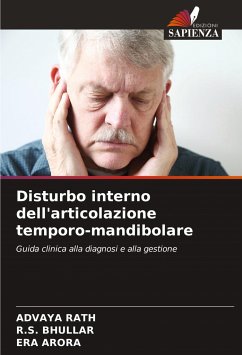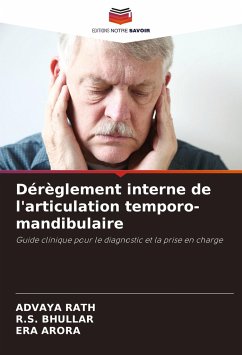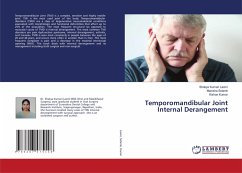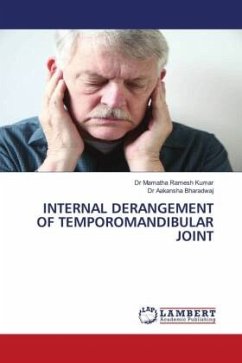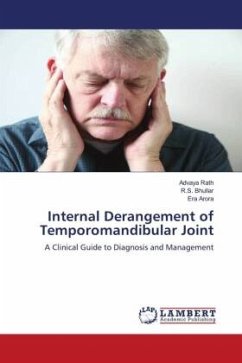
Internal Derangement of Temporomandibular Joint
A Clinical Guide to Diagnosis and Management
Versandkostenfrei!
Versandfertig in 6-10 Tagen
56,99 €
inkl. MwSt.

PAYBACK Punkte
28 °P sammeln!
The term "internal derangement" has been used for more than a century in surgical and orthopedic literature to describe conditions that interfere with normal joint function. Earlier TMJ internal derangement was perceived as a mechanical problem and interventions at repositioning the displaced disc were advocated. Over the past few decades, there has been a conceptual shift from internal derangement and disc displacement being a primary diagnosis toward our current understanding that disc displacement is an endpoint of a process in which there is damage to articular tissues and biomechanical fa...
The term "internal derangement" has been used for more than a century in surgical and orthopedic literature to describe conditions that interfere with normal joint function. Earlier TMJ internal derangement was perceived as a mechanical problem and interventions at repositioning the displaced disc were advocated. Over the past few decades, there has been a conceptual shift from internal derangement and disc displacement being a primary diagnosis toward our current understanding that disc displacement is an endpoint of a process in which there is damage to articular tissues and biomechanical failure from a specific cause that must be identified if treatment is to be successful.While the vast majority of patients adapt to the internal derangement over time with nonsurgical treatment, surgery may be indicated for those with persistent problems. This conceptual book not only provides a basic understanding of the biomechanics, pathophysiology and dynamics of internal derangement of TMJ, but also rationalizes the newer minimally invasive strategies for it's management.





